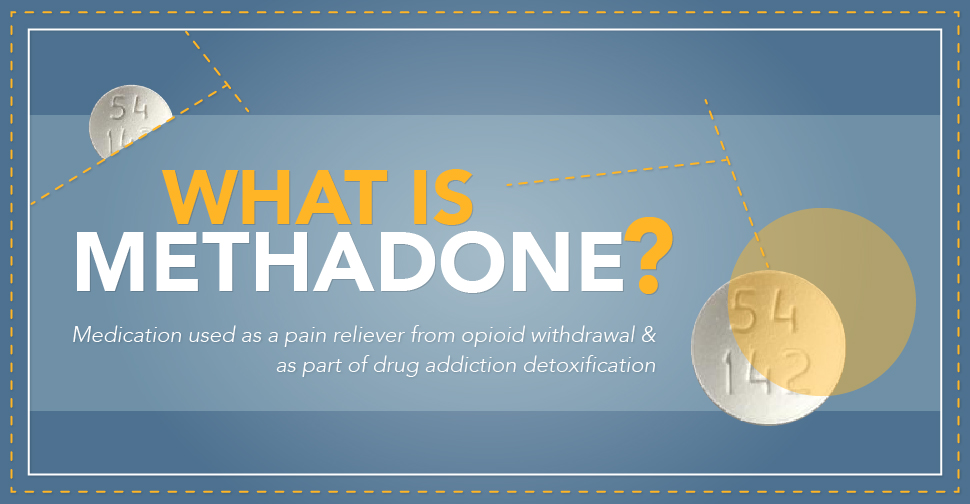
Methadone was developed under the name Dolantin in the late 1930s by German chemists Gustav Ehrhart and Max Bockmuhl. Dolantin was released as the first opioid analgesic. The drug was introduced in the US in 1947 and later used to aid in opiate detox. In 2005, Methadone was added to the World Health Organization’s List of Essential Medicines, a list of the most essential medications in the healthcare field. When used as directed by a physician, Methadone can be a powerful tool in recovery from opioid dependence.
How Does Methadone Work?
Methadone works to block the receptors in the brain affected by opiates and aids in relieving physical withdrawal symptoms. The analgesic properties can work to alleviate pain, while the opiate properties work to relieve urges. People experiencing addiction to substances such as oxycontin and heroin can find relief from typical withdrawal symptoms.
How Is Methadone Administered?
Prescribed Methadone is carefully supervised by healthcare professionals. Methadone can be administered by injection or taken orally by pill or liquid form. The first dose can take 45 minutes to take effect and 2 hours to peak. The effects can last over 24 hours, depending on dosage. The administering physician will determine how much methadone is needed to ensure safe detoxification.
Methadone And Other Substances
While taking Methadone, it is important to avoid any additional substances or medications that may interfere with treatment. Other opiates such as heroin, hydrocodone, morphine, vicodin, and oxycontin can cause overdose if taken in conjunction with methadone. Alcohol, stimulants, and other mind-altering substances can further the risk of opiate side effects, hindering treatment and risking harm with use.
What Are The Side Effects of Methadone?
Methadone use can come with side effects, which is why it must be monitored carefully. Physicians can monitor the medication dosage and oversee treatment to ensure that the drug is used safely. Some side effects of Methadone include:
- Sweating, swelling, and flushing
- Dizziness, memory loss, and headaches
- Weight gain
- Anxiety or depressive mood
- Missed menstrual periods and decreased libido
- Nausea, vomiting, diarrhea, and cramps
- Insomnia or chronic fatigue
- Headaches
In more severe cases, difficulty with respiration, prolonged QT, and heart arrhythmia may occur. In addition to side effects, Methadone may cause severe withdrawal symptoms if ended abruptly.
It is important to consult a physician before starting or ending a Methadone regimen. While the side effects can be severe, the administering physician will monitor use and adjust accordingly to ease discomfort and risk of withdrawal.
Methadone Overdose
Methadone must be monitored carefully by the administering physician as part of a rehabilitation program. While recovering from opioid dependence, it may be tempting to self-medicate. Improper dosing can lead to many ailments, including death from overdose. 25% of opioid deaths are due to Methadone abuse and overdose. Some indicators of Methadone overdose include:
- Pale, cold, and clammy skin
- Constricted pupils
- Disorientation
- Nausea
- Extreme fatigue, difficulty moving and breathing, and nausea
- Hyperventilation
- Coma, heart arrhythmia, or death
Identifying the signs of Methadone overdose can help others know when lifesaving medical attention is needed. Many worry about the legal implications of overdose and resist medical attention. It’s important to seek help if signs of overdose are present in order to prevent brain damage, coma, or even death.
We Can Help
 Methadone is a proven method of treatment for opiate addiction. If you or someone you know is considering methadone treatment, you may wonder where to begin. The friendly staff at DrugRehab.org is here to help guide you in the right direction and assist in finding rehabilitation options in your area. Contact us today with any questions you may have. We’re here to help you.
Methadone is a proven method of treatment for opiate addiction. If you or someone you know is considering methadone treatment, you may wonder where to begin. The friendly staff at DrugRehab.org is here to help guide you in the right direction and assist in finding rehabilitation options in your area. Contact us today with any questions you may have. We’re here to help you.

